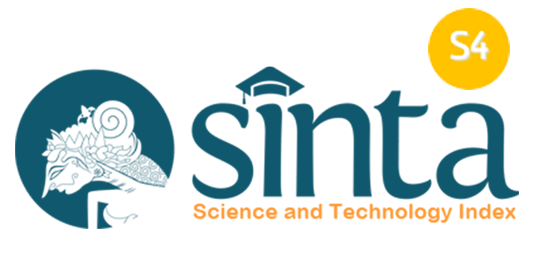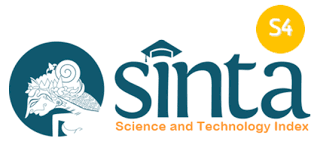KONFLIK ARAB-ISRAEL PASCA-NAKBAH (1948-1968)
KAJIAN NEW HISTORICSM PADA NOVEL 'AAIED ILA HAYFA KARYA GHASSAN KANAFANY
DOI:
https://doi.org/10.26740/paramasastra.v12n1.p82-100Kata Kunci:
New Historicism, Aid Lla Hayfa, collective trauma, identity struggleAbstrak
Penelitian ini bertujuan untuk mendeskripsikan representasi sejarah, budaya, dan identitas sosial dalam novel 'Aaeid Ila Hayfa karya Ghassan Kanafani. Menggunakan pendekatan New Historicism oleh Stephen Greenblatt, analisis ini berfokus pada interaksi antara teks sastra dan konteks historis-politik yang melingkupinya. Novel ini mengisahkan kepulangan Said dan Safiyya ke Haifa pasca-Nakbah 1948, yang sekaligus menjadi representasi perlawanan terhadap kolonialisme, krisis identitas, dan kehilangan hak milik yang dialami rakyat Palestina. Analisis ini dilakukan dengan menyejajarkan narasi novel dengan dokumen-dokumen historis yang relevan. Hasil penelitian ini menunjukkan bahwa 'Aaeid Ila Hayfa tidak hanya berfungsi sebagai sebuah cerita fiksi, tetapi juga sebagai medium untuk menampilkan trauma kolektif Palestina dan perjuangan mereka dalam mempertahankan identitas nasional.
Referensi
Amara, M. (2015) Hebraization in the Palestinian language landscape in Israel. In B. Spol-sky, O. Inbar-Lourie and M. Tannenbaum (eds) Challenges for Language Educationand Policy. New York: Routledge
Barry, Peter (2002). Beginning Theory: An Introduction to Literary and Cultural Theory. Manchester dan New York: Manchester University Press.
Brannigan, John (1998). New Historicism and Cultural Materialism. New York: St. Martin’s Press.
Chahid, Abdelfattah (2024). Cultural and Literary Studies: An Attempt to Enrich the Arabic Literary Lesson. DÂD: Journal of Arabic Linguistics and Literature, 5(9), 9–33. Sultan Moulay Slimane University, Morocco.
Demsky, A. (2018). The Hebraization of Names in Modern Israel. xxv(i), 67–81.
Eldridge, John & Eldridge, Lizzie (1994). Raymond Williams: Making Connection. London & New York: Routledge.
Greenblatt, Stephen (1989). "Towards a Poetics of Culture" dalam The New Historicism (H. Aram Veeser, Ed.). New York dan London: Routledge.
Greenblatt, Stephen (2018). Al-Tārīkhāniyya al-Jadīda wa al-Adab. Casablanca: Al-Markaz Al-Thaqafi Lil-Kitab.
Hall, Stuart (1990). The Emergence of Cultural Studies and the Crisis of Humanities, The Humanities as Social Technology, 53.
Hickling, Matt (2018). New Historicism. Brock Education: A Journal of Educational Research and Practice, 27(2), 53–57.
Kanafany, Ghassan (2013). Aāid‘ Ilā Ḥayfā. Beirut: Maṭba‘ah Kurkiy.
Bitan, H. (1992). Va‘adat ha-Shemot ha-Memshaltit, Jerusalem: Meḥqarim be-Yedi‘at ha-Areṣ ve-‘Atiḳoteha, 23, 366–370. http://www.jstor.org/stable/23623609
Knesset (1950). Absentees’ Property Law, 5710-1950: "Laws of the State of Israel: Authorized Translation from the Hebrew, Volume 4". 4(20), Jerusalem : Knesset, 68–82.
Masalha, Nur (n.d.). The Palestine Nakba: Decolonising History, Narrating the Subaltern, Reclaiming Memory. London: Zed Books.
Moleong, Lexy J. (2001). Metodologi Penelitian Kualitatif. Bandung: PT Remaja Rosdakarya.
Ofran, Hagit (2020). Annex and Dispossess: Use of the Absentees’ Property Law to Dispossess Palestinians of their Property in East Jerusalem. Peace Now.
Pappe, Ilan (2006). The 1948 Ethnic Cleansing of Palestine. 7175(141), 1–17.
Sa‘di, Ahmad H. & Abu-Lughod, Lila (2007). Nakba: Palestine, 1948, and the Claims of Memory. New York: Columbia University Press.
Said, Edward W. (1978). Orientalism. New York: Pantheon Books.
Tamari, Salim (Ed.) (2002). Jerusalem 1948: The Arab Neighbourhoods and Their Fate in the War. Jerusalem: Institute for Palestine Studies.
Williams, A. A. (2017). Al-Tārīkhāniyya al-Jayyida wa al-Dirāsāt al-Adabiyya. Majallat Fuṣūl, 99.
Unduhan
Diterbitkan
Cara Mengutip
Terbitan
Bagian
 Abstract views: 474
,
Abstract views: 474
, PDF Downloads: 517
PDF Downloads: 517












